IBMblr, IBM’s Tumblr, goes behind the lab doors to share untold stories of IBM Researchers and their culture of innovation. Presented in a style and language that speaks to the design-minded, GIF-loving, short attention-spanned Tumblr set, it’s become a popular destination for fans of tech, design and nerd culture, and a widely recognized brand leader in the platform. I’ve worked as a content curator and writer on IBMblr since 2013.
Highlights: Fractals, Play!, THINKx20, Patents
2016
:: Webby Awards /IBM Play! / Social; Education & Discovery / Winner
2015
:: Cannes Lions /IBM Play! / CYBER / WEB CAMPAIGN / Corporate Image & Communication / Bronze
:: Cannes Lions / IBM Play! /CYBER / SOCIAL / Influencer / Celebrity / Blogger Outreach Program / Shortlist
:: Clio Awards / IBM Play! / Branded Entertainment / Business-to-Business Event/Experiential / Bronze
:: OMMA Awards / IBM Play! / Integrated Online Campaign / Business-to-Business / Winner
:: OMMA Awards / IBMblr / Website Excellence / Business-to-Business / Winner
:: ECHO Awards / IBM Play! / Business & Consumer Services / Finalist
:: Webby Awards /IBM Fractal Fest / Best Photography & Graphics / Winner
:: Webby Awards / IBMblr / Social – Best Writing / Honoree
:: Webby Awards / IBM Fractal Fest / Corporate Communications / Nominee
:: Ace Award / IBMblr / Social Media /Runner-up
2014
:: Cannes Lions / IBM Fractal Fest / Branded Content: Use of Social Media / Silver
:: Cannes Lions / IBM Fractal Fest / Online Digital Design / Shortlist
:: Clio Awards / IBM Fractal Fest / Digital/Social / Shortlist
:: ECHO Awards/ IBM Fractal Fest / Digital/Social / Shortlist
:: Webby Awards / IBMblr / Blog – Business / Nominee
:: Webby Awards / IBMblr / Interactive Media / Business Products & Services / Nominee
2013
:: Cannes Lions / Viral Marketing / Shortlist
:: ECHO Awards / Professional Services / Silver
:: London International Advertising / Digital Campaign / Finalist
 C is for Cognitive
C is for Cognitive
Sesame Street is getting a new neighbor. Over the next three years, IBM Watson will work with Sesame Workshop, Sesame Street’s non-profit education group, to help create cognitive learning tools for preschoolers – that is, programs and products that teach and learn from children as their knowledge grows. With Sesame Workshop’s expertise and Watson’s natural language processing, pattern recognition and other cognitive abilities, soon we’ll have access to teaching aids that adapt lessons based on the individual likes, dislikes and engagement level of each child. It’s a friendship that even Oscar the Grouch is happy about.
 Who wants a prune, praline and paprika doughnut?
Who wants a prune, praline and paprika doughnut?
No? How about strawberry, hazelnut and avocado then? Bet you’ve never seen these unusual flavor combos at your local doughnut shop. Neither had we until we put the apron on Chef Watson. With its help, you can create your own unique doughnut flavors too. There’s no better time to try than National Doughnut Day, so fire up that fry-daddy and get cooking.
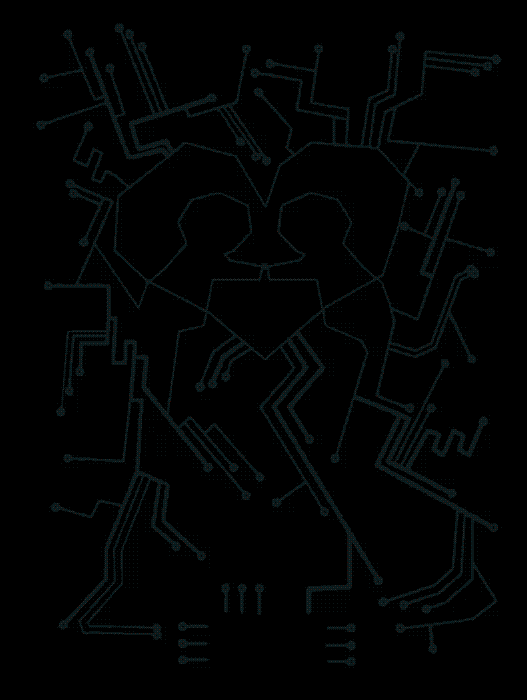 Watson the wingman
Watson the wingman
A new Watson-powered dating app from IBM-partner Connectidy just might be the best thing to happen to your love life. To find a truly deep connection, Watson first analyzes your social media accounts to learn how extroverted, agreeable, conscientious, open or neurotic you may be and matches you with someone who shares compatible personality traits. Then when it comes time to talk to a match, Watson’s tone analyzer can help up your game – or at least make it a little less awkward. It’ll read as you type with real time feedback to make sure your messages are making the right impression. After that, you’re on your own.
 When in doubt
When in doubt
Your heart races double-time. Your eyes widen. You’re lost in a Class IV rapid of doubt. It’s the “add to cart” moment. Shopping online can be overwhelming and you could use some expert advice to guide you. Like when you need to know if a mountaineer grade sleeping bag is necessary for a June music festival. Or if a water-resistant jacket is more practical for Yosemite than a waterproof one. That’s why IBM Watson has partnered with Fluid, Inc. Together they are learning to understand product and review data to help online retailers like The North Face pair in-stock inventory with what’s in store for your upcoming adventures. Just take a deep breath, and proceed to checkout.
 Toronto signs Watson
Toronto signs Watson
Draft day is coming. Hundreds of college standouts are ready for the big leagues. But which ones are ready for the Toronto Raptors? To give Toronto’s scouts and coaches an edge in sorting through next season’s prospects, they’ll team up with IBM Watson, the cognitive computing powerhouse. Watson can combine social sentiment from fans, players’ medical records, game films, stats and more to better understand each prospect and assist Toronto’s experts as they pick the best players for their upcoming roster.
 Muesli Musings with Chef Watson
Muesli Musings with Chef Watson
Toasted oats? Nuts? Honey? Dried fruits? Chocolate? What’s in your perfect granola mix? Granola-purveyor Bear Naked wants to know. So much so that they’ve asked IBM Chef Watson to help find out what it takes to get you to the bottom of your breakfast bowl. On Bear Naked’s website, you can custom-make granola blends with a dash of Watson’s cognitive culinary know-how. First you choose honey, chocolate or cashew as a base. Then Chef Watson makes personalized recommendations from over 50 ingredients based on its understanding of food pairings. Chocolate granola with jalapeños, pepitas and red sea salt actually sounds delicious…to someone.
 The Science Behind Patent No. 8977583
The Science Behind Patent No. 8977583
Super small yet perfectly poised to outthink chip technology as we know it: Patent No. 8977583 is a highly efficient chip that’s not only built to resemble the brain, but to behave in ways like one too. It all happens through (wait for it) neuromorphic and synaptronic computation – in other words, the actions of a million artificial nerve cells. With this tiny chip, we’ll be able to cram more cognition and processing power into small devices like phones, hearing aids and watches to make them think better, faster and on-the-fly like humans.
 The Science Behind Patent No. 9015032
The Science Behind Patent No. 9015032
Attention all monolingual wanderlusters: IBM Patent No. 9015032 is here to make overseas travel a whole lot easier. This cognitive language recognition system helps travelers maneuver through airports where their native tongue isn’t spoken. How? First by identifying the languages it “hears” from microphones placed throughout the airport, then by translating flight info into these languages for display and PA announcements. Could this mean the end of mad gate dashes from airport bars worldwide? Probably not. Or should we say, probablement pas, osoraku arimasen, wahrscheinlich nicht, probablemente….
 The Science Behind Patent No. 9117446
The Science Behind Patent No. 9117446
In today’s cognitive era, machines can listen and talk back to us. But can they understand the emotional nuances of our conversations? You betcha – with IBM’s Patent No. 9117446. This system detects and assigns emotion to text in TTS (text to speech) applications, so machines can read and express emotion in response to what we say, how we say it, our facial expressions and body language. And we don’t have to wait an age to see it at work. Emotion-detecting robots are already serving customers in banks and coffee shops, and keeping nursing home residents entertained – with each robot able to converse with humans and express themselves on an emotional level. So the next time you say you love technology, it might just love you back.
 Backstage at Roskilde City
Backstage at Roskilde City
179 Performances. 130,000 Visitors. 10 Days. The annual Roskilde Festival in Denmark is a lot to handle. Keeping people safe, fed, hydrated, sheltered, entertained and informed is like running a small city. Behind the scenes, students of Copenhagen Business School (CBS) are working with festival organizers to manage it all with IBM Analytics. Every piece of data from things visitors buy, to places where they spend their time, is fed to IBM Watson, to help CBS create the most efficient plan for the world’s shortest-living city. And the more Watson learns, the better the “city” runs. We hear that this year Roskilde’s best dancer gets to be mayor.
Read the full story →
 Running blind
Running blind
Simon Wheatcroft is a determined ultra marathon runner. And he just happens to be blind. To compensate for what he can’t see, Simon trains using the Runkeeper app, running on IBM Cloud. The app streams his location to the cloud where it’s analyzed every second, along with the data of over 120,000 other runners. Through his headphones the app provides audio cues about his speed and distance to help him determine when and where to turn, avoid obstacles and know how far he has to go. The IBM Cloud is helping Simon to do something amazing. We just hope he can hear it over the sound of the world cheering him on.
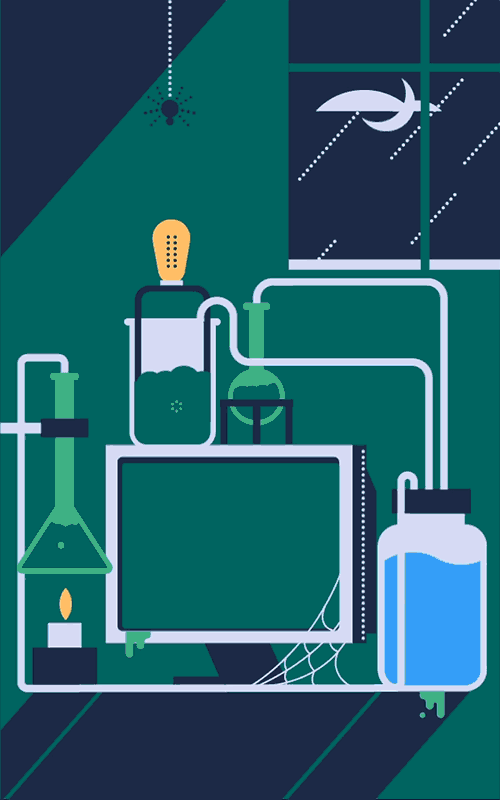 Fantastical Nonfiction
Fantastical Nonfiction
Electronic Blood
Only things with a heartbeat have blood coursing through their veins, right? Not so fast. Mad scientists at IBM’s lab in Zurich have begun creating a new experimental substance called electronic blood. Pumped through plastic veins, this blue-hued electrochemical liquid could ward off one of the major worries haunting computer systems today – how to cram in more chips and graphics cards without overheating and energy transfer troubles. Eat your heart out, Dr. Frankenstein!
Happy Halloween all you geeks and goblins!
 Fantastical Nonfiction
Fantastical NonfictionFor the love of chocolate
Valentine’s Day without chocolate? Say it isn’t so… ! Not long ago, disease ridden cacao crops made this heart-breaking scenario as a real possibility. Thankfully, due to some “research-love” in the field genomics, the world’s chocolate-lovers can breathe a collective sigh of relief. In 2008, IBMers and candy-makers at Mars Inc. launched a program to sequence, assemble and ultimately identify disease-resistant genomes in cacao plants. The result: healthier beans for farmers and a healthier chocolate supply for everyone. We ❤ ❤ ❤ research.
 World’s Fastest Tennis Serve
World’s Fastest Tennis Serve
Keeping your eye on the ball isn’t as easy as it sounds for opponents of Australian tennis player Samuel Groth. Especially when they know that on May 9, 2012 he put all of his 6-foot-4 frame and muscle behind a serve that reached a record-breaking 163.4 mph (263 km/h) – that’s as fast as a locomotive travelling at top-speed.
Word to the wise: Don’t blink when Samuel steps up to the baseline.
 Learning 日本語
Learning 日本語
Spanish. Check. Portuguese. Check. Japanese? You got it. Cognitive polyglot IBM Watson is now taking on one of the ultimate linguistic challenges by adding Japanese to its repertoire. IBM and Tokyo-based SoftBank are teaching Watson to get a grasp of the thousands of kanji, 46 katakana and 46 hiragana characters, not to mention the almost endless contextual nuances Japanese presents. Once fluent, Watson will be able to understand, speak and think in Japanese, so it can analyze questions in the country’s mother tongue.
 Man with Machine:
Man with Machine:AI is changing everything
We’re using it to help diagnose our ills. To turn our bodies into game controllers. To translate our speech into real time. And even create self-driving cars. Everything we do, AI is helping us do it better. By helping us be better doctors, teachers, pilots and judges, augmented intelligence is actually making us smarter. And most surprisingly, making us redefine who we are and what it means to be human. Read more about how AI is bringing sci-fi dreams to life and making us better humanoids→
 Man with Machine:
Man with Machine:A.I.-inspired wanderlust
What if you could tell your smartphone that you’re taking a “mancation” to Austin with three buddies, then have it recommend Formula 1 racing, Austin City Limits Music Festival, table 7 by the window at Habernero Mexican Cafe? You’d be pretty stoked, right? Hold that thought. The founder of Kayak is launching an AI-powered concierge that gives personalized travel recommendations based on your interests. Read up on how AI is helping make your time off from work more unforgettable →
 “Something can be funny without being humorous-with irony. It helps, of course, if the material is amusing, but someone with a sense of humor can make almost anything funny. How something is done or delivered is often more important than what.”
“Something can be funny without being humorous-with irony. It helps, of course, if the material is amusing, but someone with a sense of humor can make almost anything funny. How something is done or delivered is often more important than what.” Paul Rand
Legendary artist, IBM logo designer

We came. We cooked. We conquered Texas-sized hunger pangs. The IBM Food Truck has packed its bags, put away its aprons and high-tailed it out of Austin. Thanks to everyone who stopped by to treat their tastebuds to the culinary skills of man and machine – that is, the Institute of Culinary Education chefs and the IBM cognitive computing system. Together they took SXSW by the horns and showed everyone their cognitively-concocted recipes, like the tasty Swiss-Thai Asparagus Quiche represented by this fun GIF. Until the Food Truck hits the road again, bon appétit.
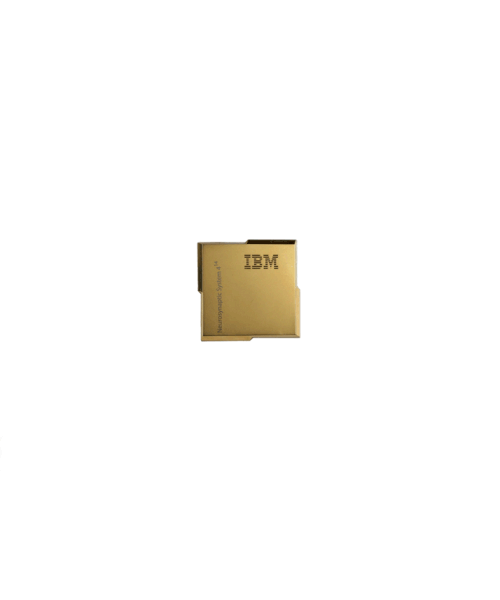 Fantastical Nonfiction
Fantastical NonfictionHoney, I shrunk the supercomputer
Supercomputing power that once filled a room now fits in a postage stamp-sized chip. Just as amazing is what these chips can do. Take SyNAPSE, IBM’s tiny new neurosynaptic chip. By emulating our brain’s computing efficiency, these little wonders mean big gains for small sensor-equipped devices. Like a tumbleweed-like robot that can roll around disaster zones on search and rescue missions, or glasses that give the blind a new way to navigate their surroundings. Lots of good things come in this small package…just remember where you put it.
 Selectrically speaking…
Selectrically speaking…
53 years ago this week, electronic “golf-balls” began bouncing their way across the letterheads of corporate America. The IBM Selectric typewriter revolutionized mid-century office memos as typists could now use different fonts and clock up to 90 words a minute–40 more than anything else before it. Good thing white correction fluid was already invented.
 ART IN SCIENCE
ART IN SCIENCE“Majesty Under Microscopy”
IBM Research – Zurich
2012
Since when did carbon-carbon bonds get so pretty? This nanographene molecule, synthesized in Toulouse, France, shows us the beauty of ‘bond-order discrimination.’ This splendor in chroma is achieved by atomic force microscopy using a carbon monoxide functionalized tip. Luckily, like any work of art, you don’t have to understand it to enjoy it.
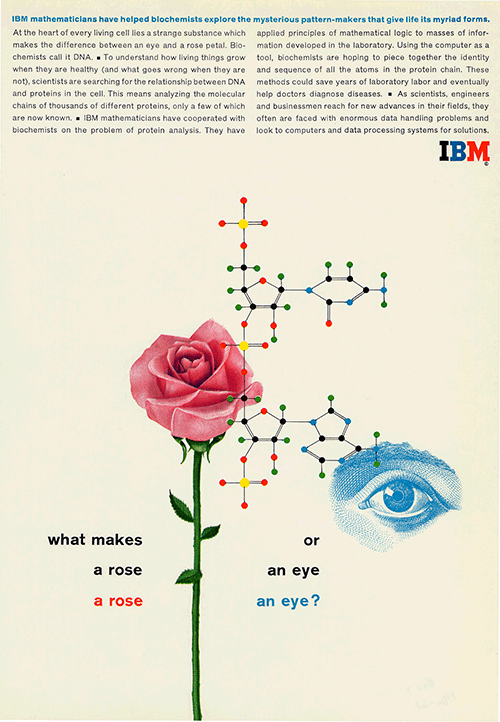 From the Vault:
From the Vault:PROTEIN PATTERNS, 1961
When this vintage ad ran in the early 60s, “DNA’ was on the tip of every biochemists’ tongue. They were all abuzz about its relationship with cell proteins and their molecular chains and patterns. Using a computer, pioneering IBMers in math and biochemistry began applying mathematical logic to huge amounts of data to piece together the sequence of atoms in the protein chain. It was Big Data analysis before it was BIG.
 Fantastical Nonfiction
Fantastical NonfictionNames that tune in 3 notes
No, it’s not a contestant from the classic TV game show. It’s an IBM computer that uses algorithmic computation to identify a song’s musical period—Baroque, Classical or Romantic— in only three notes. And when applied to speech patterns, the same technology can be used as an early warning system for Parkinson’s disease and certain kinds of psychiatric disorders. Read on →
 Fantastical Nonfiction
Fantastical NonfictionVampire Energy
Forget the garlic. Put away your crucifix. IBMers in Zurich are working on a way to protect you from a 21st Century’s demon called ‘Vampire Energy‘—the power used while you leave your gadgets and appliances turned off and plugged in. By developing a transistor that regulates energy usage, this innovation aims to cut your devices’ power consumption by as much as 90%. This could save U.S. households billions in power costs. A scary good trick, and an even better treat.
Muah-ha-ha-ha! Happy Halloween, everyone.

Longest Match Ever Played
The things you can do in 11 hours: Fly halfway around the world. Have the best night’s sleep ever. Or play a round of tennis? That’s exactly what Nicolas Mahut and John Isner did in 2010. For 11 hours and five minutes of play over three days, they battled it out to a final score of 6–4, 3–6, 6–7, 7–6, 70–68 in favor of Isner. Fan tip: bring a pillow and blanket next time these two play.
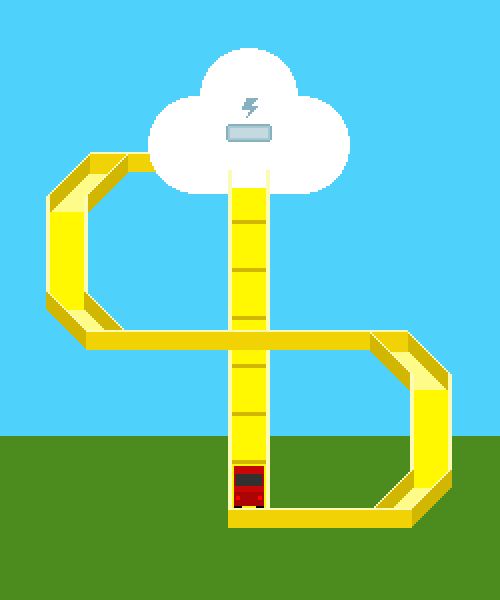 Fantastical Nonfiction
Fantastical NonfictionF̶i̶l̶l̶ ̶’̶e̶r̶ ̶U̶p̶!̶ Plug-er-in!
Out of the way gas-guzzlers. It’s estimated you’ll be sharing the road with 3 million electric vehicles by 2017. IBMer energy specialists are already preparing for the world adoption of EVs with a cloud-based electric vehicle charging system innovation. By putting electric cars in direct communication with the power grid, each plug-in seamlessly accesses vehicle I.Ds., battery storage info, energy transaction plans and payment details. Amazing to think that soon we’ll be watching the price-per-Kwh instead of the price-per-gallon. Explore more stories →
 IBM Watson for mixologists
IBM Watson for mixologists
Don’t you just love it when a bartender knows what you want before you do? That’s what’s in store for those at SXSW right now. On Friday, IBM unveiled a Cognitive Cocktail Bar where bartenders use Watson’s cognitive capabilities to create the perfect drink for guests. How? First, Watson learns about bar patrons from data stored in their wristbands – info such as conference activity, personal preferences, interests and social media accounts. Then Watson analyzes this data to recommend a bespoke cocktail concoction. With Watson’s help, maybe some day every bar will know your name.
Not at SXSW? You can still experience your own cognitive drink concoctions through the IBM Watson Twist app.
 On Bagels and Benoit:
On Bagels and Benoit:
“Benoit once told me that the best tasting bagels are those with a fractal distribution of holes. If the bagels are cooked at the right temperature, the carbon dioxide generated by the yeast forms bubbles with a fractal distribution. So before you buy a bunch of bagels, cut one open, look at the different hole sizes, and they range from very small to very large, they were cooked properly. Of course, you can always taste one bagel before buying a bunch from the same batch. But that’s not the “fractal way” to judge your food.“
James Wynne LASIK Pioneer, IBM Researcher
Just think. Without Pac-Man, there might never have been the IBM PC. No really. Happy 35th Birthday, Pac-Man, Blinky, Inky, Pinky and Clyde!
 A bottle of red made with data.
A bottle of red made with data.Finding the perfect wine used to mean going to a good wine store, discussing your future meal with a sales person and trying to remember the wine the next time you buy. Now all you have to do is go to a website, like that of Bordeaux-based fine wine merchant Millesima. With data, they can help any customer, anywhere in the world, select the right bottle, for the right meal, the right climate, time of year, you name it. Plus you don’t have to soak off the label to remember the name and vintage when you want to buy it again. Explore more stories →
 Chocoholics made with cloud
Chocoholics made with cloudWe’ve all got our own techniques for figuring out what’s what in a box of assorted chocolates: Bite in half, squeeze for texture, push in the bottom, or the smartest way, simply use the key under the box lid. Well, here’s some great news for chocolate lovers everywhere. Lindt Chocolates have found a way to do away with this needless destruction. With cloud computing, the 160+-year-old Swiss chocolatier has made it possible for you to order your own pick and mix truffles and chocolates online, and in your own, custom-designed packaging. So life doesn’t have to be like a box of chocolates— now you know what you’ll get.
Watch the Dispatch | Explore more stories →
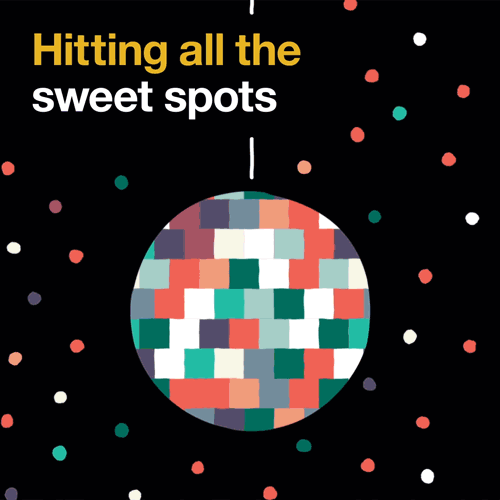 Unst! Unst! Unst! That’s the sound of another day at the US Open coming to a close as a Tennis + NYC nightlife mashup. No ID or cover charge required.
Unst! Unst! Unst! That’s the sound of another day at the US Open coming to a close as a Tennis + NYC nightlife mashup. No ID or cover charge required.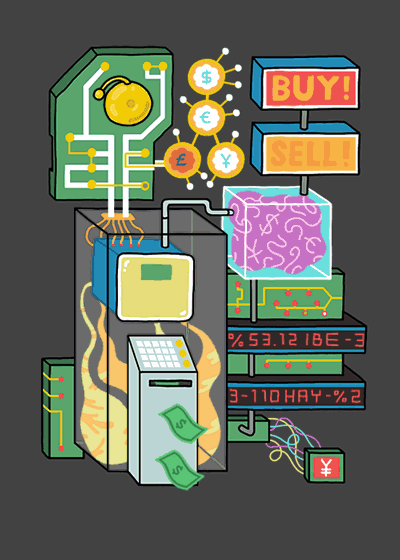 Watson, the finance whiz
Watson, the finance whiz
There’s enough financial fodder produced every day to make planners’ heads spin. To read, absorb, much less use all that investment info is virtually impossible. Not for Watson. It can collect masses upon masses of daily news, analyst documents, e-mails, transaction data and public opinion, then read it, remember it, learn from it and use it — all to help financial advisors separate the bears from the bulls and recommend investment and portfolio changes with confidence.
 Watson at your service
Watson at your service
“One moment, please.” “We’ll be with you shortly.” “You are eighth in the queue.” Sound all too familiar? Maybe not for long—The Watson Engagement Advisor can listen to customer queries, suggest personalized follow up questions and help operators find answers in a flash. For even faster service, callers can interact directly with Watson itself. Could this also mean an end to the need for mind-numbing “hold music?” (One can only hope.)
 Watson, your personal shopper
Watson, your personal shopper
In need of some retail therapy? Soon you’ll be able to bring Watson along. As the cognitive technology behind the Expert Personal Shopper app in development, Watson will be able to help you make smarter buys based on your preferences. Like your own uber-clued-in, trend-savvy sales associate that fits in your pocket, only without the attitude or high pressure sales pitches.
 U.S. PATENT #8,610,295:
U.S. PATENT #8,610,295:Reclaiming energy from waste water in tall buildings
THINK OF IT AS…Bath water-generated hydroelectricity. This system uses gravity to make electricity from rainwater, grey water and black water as it exits tall buildings. With every flush or turn of a faucet, water rushes down into a turbine, generating power and making you rethink your next goldfish funeral.
Another patent from our 21st year of record-breaking innovation.
 U.S. PATENT #8,547,214:
U.S. PATENT #8,547,214:System for preventing handheld device use while operating a vehicle
THINK OF IT AS…A mobile phone forcefield for textaholics. This innovation can analyze your fingerprints, voice patterns, retina images, heartbeat and more—to prevent you from using a handheld device while operating a vehicle. So less attention on your phone and more on that moose that just stepped out in front of you…
Another patent from our 21st year of record-breaking innovation.
 Innovation Through PLAY!
Innovation Through PLAY!
Yearning for the days of your youth, when playtime was all of the time? Bring play back! Through play, we try new things, problem-solve, create and learn how to make stuff even better. Play opens our minds to what’s possible and helps us make it happen. It sparks innovation and scientific breakthroughs by unleashing our curiosity and letting our imaginations run wild. So put your routine away and come out to play for a while. There’s room in the IBMblr sandbox for everyone. #IBMblrAtPlay

